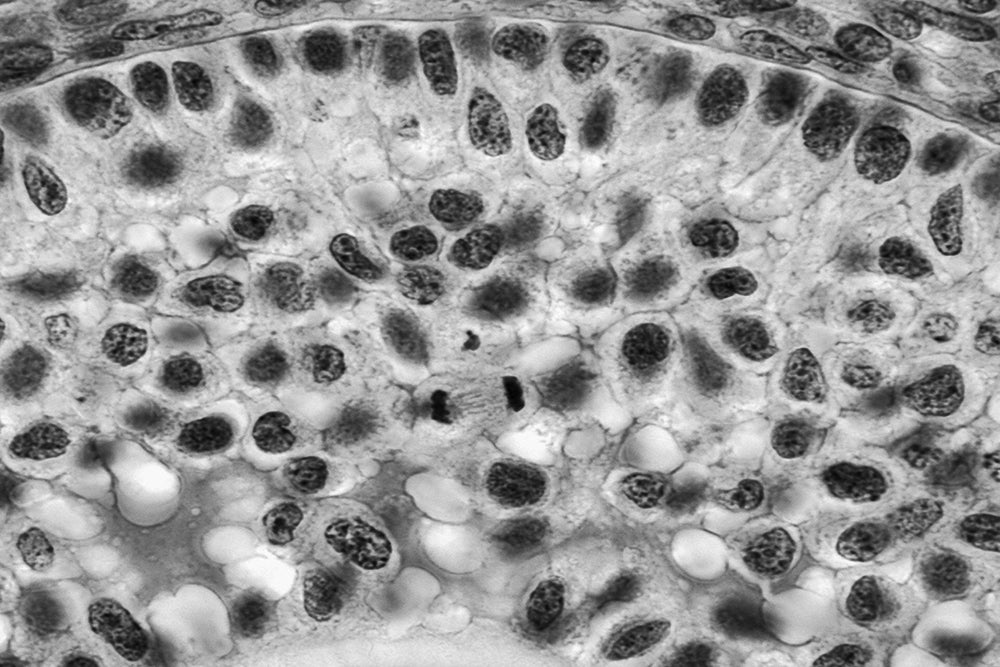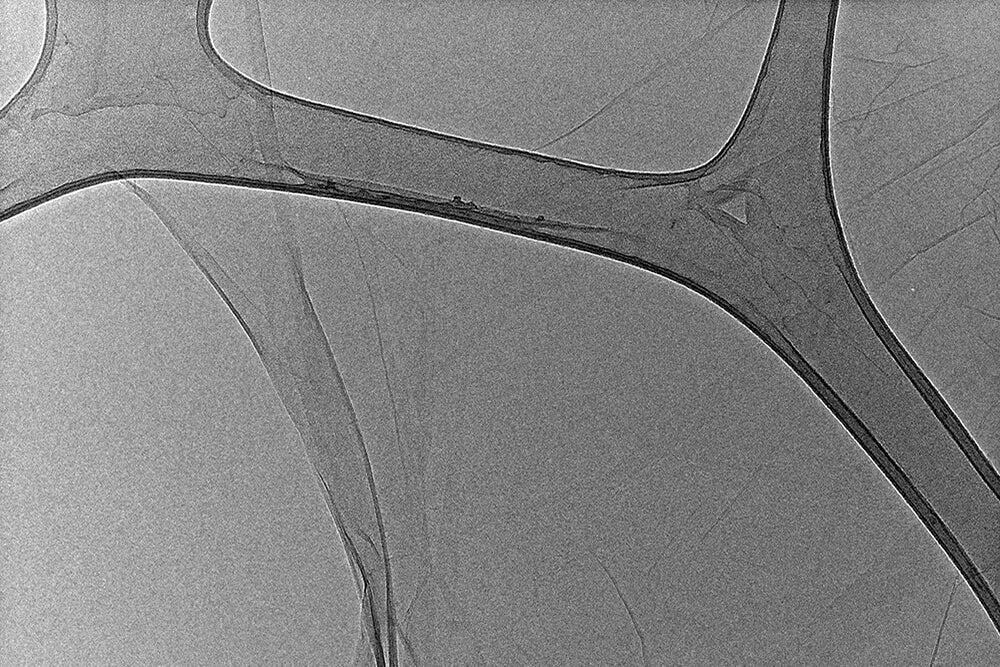
ingredient focus: coenzyme Q10

the bottom line
Also known as ubiquinone*, coenzyme Q10 is a lipid molecule found in almost all living cells. Although it was originally thought to have a role only in the transfer of energy, it’s now known to function as an antioxidant as well. With the discovery that coenzyme Q10 can be absorbed topically, new horizons opened for uses of this multi-dimensional molecule. Keep reading to learn more about the power of coenzyme Q10.
first layer: the science of aging skin
Before delving too deeply into coenzyme Q10, or ubiquinone, a brief discussion of how the skin ages is in order. Essentially, there are two mechanisms of skin aging: intrinsic aging and extrinsic aging. Intrinsic aging refers to the physiologic changes that occur in our skin with time. At the cellular level, keratinocytes*, fibroblasts*, and melanocytes* decrease with age. The vascularity of the skin decreases, and the number of cells involved in immunosurveillance decreases. There are fewer sweat glands with decreased subcutaneous fat and a flattened dermo epidermal junction. This manifests clinically with fine wrinkles, poor wound healing, an increased risk of contact dermatitis, and fragile and more translucent skin.
Extrinsic aging occurs as a result of external and environmental factors, including smoking, pollution, and, most notably, ultraviolet (UV) radiation. Photoaging is the term used to describe the histological (seen under the microscope) and clinical findings found in chronically sun-exposed skin in middle-aged and elderly adults. Photoaging is believed to accelerate the intrinsic aging process. When photoaged skin is examined under the microscope, the most remarkable finding is dermal elastosis*, a change in the extracellular matrix which consists of thickened and tangled elastin fibers. The blood vessels within this elastotic dermis are typically twisted and dilated. Other changes include a decrease in collagen* and flattening of the dermo epidermal junction*. Clinically, this manifests as skin with deep wrinkles, variable skin thickness, rough skin texture, dryness, telangiectasia*, and pigmentation.
Both intrinsic aging and photoaging are associated with an increase in cellular oxidation, which in turn can damage the lipids, proteins, and DNA of our cells. Here’s where the critical role of antioxidants becomes evident. Vitamin E, coenzyme Q10, and ascorbate (vitamin C) are all powerful antioxidants* found within our skin.
second layer: what is coenzymeQ10?
Coenzyme Q10 is an energy transfer molecule located within the mitochondria of most living cells. Synthesized by most human tissues, coenzyme Q10 levels are highest in organs with high rates of metabolism, such as the heart, kidneys, and liver. Although the concentration of coenzyme Q10 in the skin is significantly lower, it also acts as a potent antioxidant in this location with higher levels seen in the epidermis than the dermis.
third layer: what does coenzymeQ10 do?
Coenzyme Q10 works at multiple levels. As an antioxidant, it has been shown in vitro (in the lab) to protect keratinocytes by reducing the level of UV-induced oxidative DNA damage by 60-70%. When fibroblasts have been stressed by UV radiation, coenzyme Q10 has similarly demonstrated that it is able to correct the subsequent decrease in antioxidant activity. When studied in vivo (in human volunteers), coenzyme Q10 has also been observed to penetrate into the epidermis and act as an antioxidant when applied topically to the skin.
Coenzyme Q10 has also been shown to slow the loss of hyaluronic acid*, a molecule which is one of the main components of our connective tissue and which diminishes with age. Another study demonstrated that coenzyme Q10 is capable of promoting the proliferation of fibroblasts and increasing expression of elastin* and collagen* types IV and VII (type IV collagen forms part of the basement membrane* of the epidermis, while type VII collagen connects the basement membrane to the dermis). The production of laminin 332 by keratinocytes is promoted by coenzyme Q10, a notable finding because laminin is known to promote basement membrane repair. Although cell turnover typically decreases with age, aged cells have exhibited a higher rate of division following treatment with coenzyme Q10.
Free radicals activate specific pathways in dermal cells which result in the production of matrix metalloproteinases (MMP)*, which include collagenase*. Collagenase is an enzyme which breaks down collagen, one of the main proteins which provides structure to our skin. Pretreatment of the skin with coenzyme Q10 has been shown to reduce collagenase levels by 50% following UV exposure.
The depth of skin wrinkles also changes following coenzyme Q10 application. When coenzyme Q10 is applied topically, the depth of wrinkles has been reported to decrease by 27%. As our skin ages, corneocyte* size also increases. Topical treatment with 0.3% coenzyme Q10 decreases corneocyte size to a level seen in skin which is 20 years younger.
fourth layer: how we do it
Coenzyme Q10 is a key ingredient in our bakuchiol & pomegranate facial oil, a luxurious skin treatment that winds back the appearance of wrinkles, with natural retinol alternative bakuchiol, sea buckthorn seed oil, rosehip seed oil, and bisabolol. it’s skin’s very own time machine. fluorescent spandex not included.
All this and more at www.anokhaskincare.com .
Add a layer by joining our newsletter here.
xx
anokha
references:
- Burke KE. “Nutritional antioxidants”. (2005) Cosmeceuticals, 1st ZD Draelos, ed. 1st ed. Elsevier Saunders. pp. 127-128.
- Blatt T, Littaru GP. Biochemical rationale and experimental data on the antiaging properties of CoQ10 at skin level. BioFactors 2011; 37: 381-385.
- Gilchrest BA. Skin aging and photoaging. J Am Acad Dermatol 1989; 21: 610-613.
- Hoppe U, Bergemann J, Diembeck W, et al. Coenzyme Q10, a cutaneous antioxidant and energizer. BioFactors 1999; 9: 371-378.
- Inui M, Ooe M, Fujii K, et al. Mechanisms of inhibitory effects of CoQ10 on UVB-induced wrinkle formation in vitro and in vivo. BioFactors 2008; 32: 237-243.
- Muta-Takada K, Terada T, Yamanishi H, et al. Coenzyme Q10 protects against oxidative stress-induced cell death and enhances the synthesis of basement membrane components in dermal and epidermal cells. BioFactors 2009; 35: 435-441.
- Mine Y, Takahashi T, Okamoto T. Stimulatory effects of collagen production induced by coenzyme Q10 in cultured skin fibroblasts. J Clin Biochem Nutr 2022; 71: 29-33.
- Knott A, Achterberg V, Smuda C. et al. Topical treatment with coenzyme Q10-containing formulas improves skin’s Q10 level and provides antioxidative effects. BioFactors 2015; 41: 383-390.
*definitions:
antioxidant: an antioxidant is a compound that inhibits oxidation. free radicals create oxidative stress and an inflammatory response which in turn can damage DNA and result in injury to the epidermal and dermal layers of the skin. in the skin, this manifests as premature aging with decreased elasticity leading to increased wrinkling, age spots, and decreased skin tone. antioxidants stabilize free radicals, which in turn limits their ability to damage the body. some of our favorite ingredients are notable for their antioxidant effects, including elderberry, plum, and lychee.
basement membrane: a thin layer of extracellular material which supports the epidermis and assists in filtration. in the skin, the basement membrane is located between the epidermis and dermis.
coenzyme Q10: also known as ubiquinone, coenzyme Q10 is an energy transfer molecule which also acts as an antioxidant.
collagen: a fibrous protein that forms part of the dermal matrix, connective tissue, cartilage, and bone.
collagenase: an enzyme which breaks down collagen, one of the main proteins which provides structure to the skin
corneocyte: a flattened, dead keratinocyte found in the stratum corneum
dermal elastosis: a change in the extracellular matrix which consists of thickened and tangled elastin fibers
dermo epidermal junction: the junction between the epidermis and dermis of the skin
elastin: elastin is a protein that forms the main component of elastic fibers in the skin. it provides stretch, recoil, and elasticity.
extracellular matrix: a three-dimensional network of extracellular macromolecules and minerals, including collagen, enzymes, proteins, and hydroxyapatite that provide structural and biochemical support to surrounding cells.
extrinsic aging: skin aging which occurs as a result of external and environmental factors, including smoking, pollution, and, most notably, ultraviolet (UV) radiation.
fibroblast: a cell that contributes to the formation of connective tissue within the body. fibroblasts secrete collagen proteins which help to maintain the structural framework of the tissues
hyaluronic acid: a molecule which forms one of the chief components of connective tissue
intrinsic aging: an age-dependent deterioration of skin functions and structures, such as epidermal atrophy and flattening of the epidermal-dermal junction
keratinocyte: the primary cells of the epidermis, which constitute 90% of epidermal skin cells. keratinocytes for a barrier against environmental damage and are shed every 45-60 days.
matrix metalloproteinases (MMP): matrix metalloproteinases are a member of a group of enzymes that can break proteins such as collagen or elastin. they can be over-stimulated by internal or external agents to break down healthy proteins.
melanocyte: pigment-producing cells located in the basal layer of the epidermis
oxidation: a reaction that occurs by combining oxygen with another substance
telangiectasia: dilation of the capillaries which causes them to appear as small red or purple clusters on the skin
ubiquinone: ubiquinone is another name for coenzyme Q10. as its name implies, it is present in almost all living cells.
for more beauty definitions, explore the glossary.
faqs:
what are some coenzyme Q10 benefits for skin?
coenzyme Q10 has been shown to act as an antioxidant, slow the loss of hyaluronic acid, promote the proliferation of fibroblasts, increase the expression of elastin and collagen, reduce collagenase levels, and decrease skin wrinkle depth.
what are some coenzyme q10 anti aging benefits?
coenzyme Q10 helps to slow the loss of hyaluronic acid, reduce collagenase levels, and decrease skin wrinkle depth.
are there coenzyme Q10 skin lightening benefits?
coenzyme Q10 has not been shown to have skin lightening benefits on its own.
what is the best coenzyme Q10?
there are no specific grades of coenzyme q10. look for either “coenzyme q10” or “ubiquinone” on the ingredient label to be certain that it is contained within your product.



leave us a comment
This site is protected by hCaptcha and the hCaptcha Privacy Policy and Terms of Service apply.